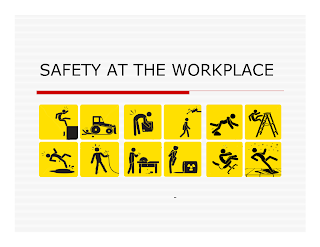In this article main topic will be to show importance of Safety Officer Courses in Rawalpindi islamabad lahore
Plant safety inspection is a kind of self-checking system. Its aims are to identify potential hazards, look for facility failure, conform the existing safety measures are effective, ensure safety tools availability and conformity, check safety-protection devises functionality, seek unsatisfactory safety programs, check documents and check current safety of the workplaces.
Areas in the plant site that are subjected to be inspected include plant facilities, working conditions, safety equipments/tools, workplace references, jobs, tasks and activities.
Plant safety inspection is the effective measures to prevent accident and even emergency situations. In most cases, safety inspection is more active, rather than reactive.
Furthermore, following information is provided in detail in safety officer course in rawalpindi
Who is in charge for doing it?
Safety inspection should be done by well-trained individuals or team, which can consist of safety representatives in your organization or internal-safety inspectors.
Plant Safety Inspection Procedures
At first, a procedure for doing the inspection has to be provided as well as safety inspection form and checklist. The procedure should describe clearly scope of inspection area, corrective actions and management review. To prepare the best inspection checklist, an initial complete survey to the facility and jobs/tasks is required.
Inspection is performed by surrounding the plant site area and filling out the checklist. Then, classify inspection findings or deficiencies into urgent action, quick improvement or recommend for future improvement. Write down these findings on report form and distribute copy of the report to the management, related sections and don not forget to provide one copy for filing.
It is no problem if we separate each area to be inspected. Making a schedule will give us a good mapping area and get better inspection results. Plant safety inspection is recommended to be performed in a regular basis. For instance, it is scheduled once per month.
Follow up Against Safety Inspection
Put at the top priority the required urgent actions soon after inspection report released. When it is too late to take actions, an accident may occur. Of course, the management should review all the inspection findings according to the report and introduces quick decision on urgent ones before taking actions.
Some actions may require additional investment and could not be decided in a short time. However, alternative corrective measure has to be provided to control the associated potential hazards. That is why management review on this matter is essential.
Rahman Rashid is best trainer for safety officer course in islamabad and please contact 0092-333-5380170 or email trainingcoursespakistan@gmail.com






